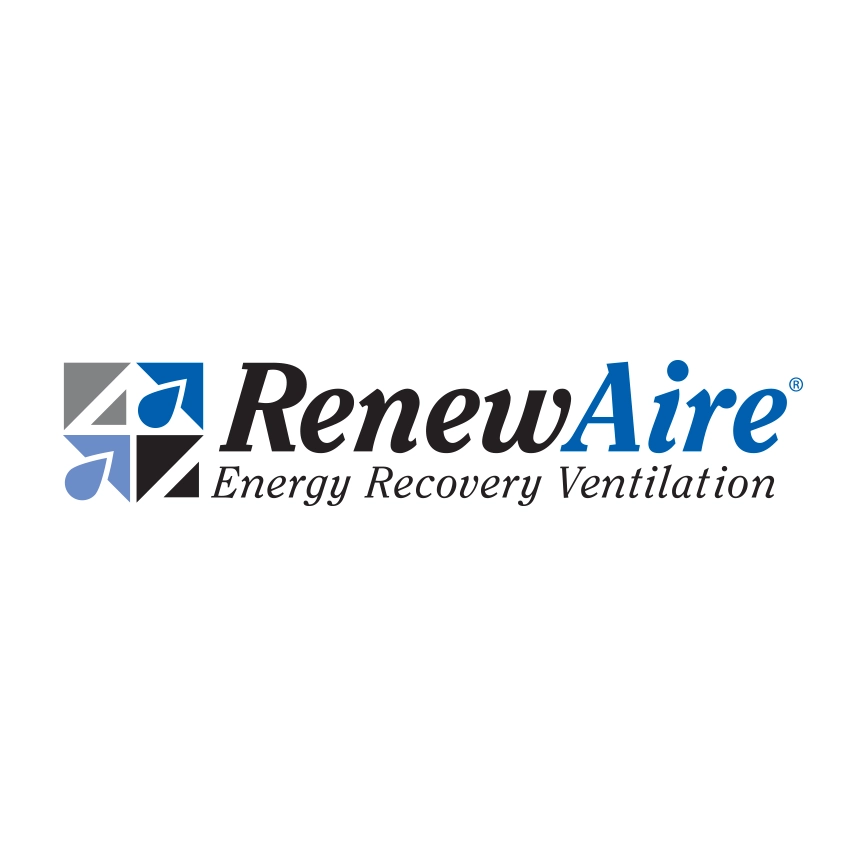Maximize Ventilation Potential with ERVs as Compared to HRVs
What Are the Key Differences Between ERVs and HRVs?
As the names above explain, ERVs are ventilators that recover energy while HRVs recover heat. But how exactly are they different? The first key variance is that HRVs only recover heat whereas ERVs recover both heat and humidity. This is explained later on in the podcast.
Additional differences between ERVs and HRVs include the following:
• HRVs are prone to condensation and require drain pans. ERVs don’t experience this and don’t need drain pans.
• HRVs cannot be installed in any orientation because of their drain pans. ERVs can be installed in multiple orientations.
• HRVs must go through an active defrost, which limits ventilation potential. ERVs don’t need defrost, which maximizes energy efficiency and ventilation potential.
• HRVs can only be installed in colder northern climates. ERVs can be installed in any climate.
Before continuing on, let’s take a more detailed look at sensible vs. latent energy and why they both matter for ventilation. Sensible energy is dry heat and is the temperature that you can feel or sense. Latent energy is wet heat and is the energy a substance absorbs or releases when a phase change occurs, such as water converting into vapor. Unlike sensible energy, latent energy doesn’t change the temperature and thus can’t be felt. When looking at the combination of both sensible and latent energy, this is called total energy. ERVs recover total energy (heat and humidity), whereas HRVs only recover sensible energy (heat).
As Marks outlined in the podcast, “the main difference between the two is an HRV only recovers sensible heat in the air exchange between the exhaust air and incoming air and an ERV recovers both total energy consisting of heat and humidity.” He continued with an example: “In the case where you have a controlled space with a desired humidity level, you’re sending out humidity with the exhaust air if the outdoor air coming inside is too humid. This is the primary advantage of having an ERV over an HRV. An HRV will just warm up one airstream and cool down the other airstream.”
Why are both sensible and latent energy important for ventilation? Agopian dug a little deeper on the topic. “If I tell you it’s 95 degrees outdoors, you’ll say it’s hot, but if I say it’s minus 20, then you’ll say it’s pretty cold. That’s the actual temperature that your body senses, and this is sensible energy. The wet heat that is in concert with this dry heat is the humidity.”
Agopian continued, “when delineating the difference between sensible energy (the dry heat or actual temperature) and the latent energy (the moisture that’s in the air) we realize that there are two parts to the equation to give you your total energy. Only focusing on one part of the energy equation is like leaving money on the table for something you’re trying to buy. Of course you want to remove the heat in the summertime, but you also want to remove the humidity. And an ERV accomplishes both of these goals.”
Going further Marks added that, “the work your AC has to do to remove the moisture is in some cases far in excess of what it takes to cool [the dry bulb temperature] down. An ERV has a special membrane in it and it’s unique in that it enables moisture to pass through it. Air runs through [the membrane flutes] and transfers heat via sensible conduction but it also passes moisture via diffusion and that’s different from an HRV. An HRV is just a plate-on-plate heat exchanger with very thin material.”
How Are ERVs and HRVs Similar?
After discussing the differences between ERVs and HRVs, the topic moved to the similarities. Marks kicked off the conversation with a quick summary. “They both recover energy. They save you money on your power bill. They both have balanced ventilation. Usually they both filter the air. The big core difference is the heat exchanger. Is it just exchanging sensible heat? That’s an HRV. If it’s exchanging sensible and latent heat, then it’s an ERV.”
Adding to this was Agopian. “A recovery ventilator, regardless of whether it’s an ERV or an HRV, is used to displace air and filter the outdoor air that’s coming in.” Along these lines, he noted that most HRVs use only Minimum Efficiency Reporting Value (MERV) 8 filtration and ERVs today have higher capabilities and they can adopt MERV 13 filtration. For background, MERV ratings measure a filter’s capacity to capture particles of varying sizes. For example, a MERV 8 filter only captures 20% of the smallest particles while a MERV 13 filter captures 50%. Plus, MERV 13 filters are more effective at capturing larger particles.
However, the key difference between the two systems—humidity control—was emphasized by Agopian. “An ERV gives you a little more help to dehumidify within the space as compared to an HRV that doesn’t offer anything in terms of humidity control. With an ERV it’s a lot more efficient than not.”
Along those lines, Agopian addressed outdated thinking about ERVs vs. HRVs. “It used to be thought that ERVs are great only down south where there’s high humidity. Well that’s true, but as we go north, and even in Canada, we see a lot of humidity as well. Does it get as humid in New York City, Montreal, and Toronto as it does in Seattle? Yes. We do need ERVs in the summertime, and now more than ever, we have some humidity within spaces in the wintertime in the northern regions. An ERV will allow you to keep that humidity indoors.”
Building on this point was Marks. “The misconception is, ‘I have an HRV because I live in a cold climate and an ERV doesn’t provide much value.’ But the wildcard is whether you are conditioning air in the winter. If you have a humidifier, you’re evaporating water and adding a cooling load to heat up your house to turn that water into water vapor. If you ventilate, you send that water vapor outside and bring in cold air that will dry out your home. Conversely, an ERV resists humidity changes.”
What Are the Main Negatives When Comparing ERVs and HRVs?
The conversation then delved further into the differences between ERVs and HRVs, digging deeper into the main negatives. Marks explained, “When you value fresh air, you bring in more of it and you have to do energy recovery. An HRV recovers energy, but does that solve the entire problem? We know an HRV can’t mitigate moisture coming into your home. An ERV is a great tool to bring in fresh air, recover humidity, save money and be energy efficient and healthy at the same time.”
Discussing the operational differences between ERVs and HRVs was Agopian. “Number one, because you’re not transferring humidity in an HRV, in wintertime humidity does condense and freeze up. All HRVs have an active defrost cycle in northern areas with snow. This means that for a period of time, ice needs to be melted and you have no ventilation. In addition, because you have defrost, there’s a pipe dangling down from an HRV. Sometimes drains clog and you have a pool of water in your basement. An ERV is almost maintenance-free as compared to an HRV. Further, the goal as we move forward from all cognizant authorities is continuous ventilation. Thus, they’re saying to use an ERV everywhere.”
Summing up the podcast was Marks. “If you’re operating at a temperature far below the freezing point, frost will start moving across the HRV heat exchanger until it’s completely blocked. That’s why HRVs have a defrost cycle, during which there’s no more heat recovery. It’s just exhausting air to thaw out the HRV. If you wanted to have equal performance, then you should oversize the HRV because it’s not really doing any recovery during defrost. The winter performance of an ERV is far superior to an HRV.”



